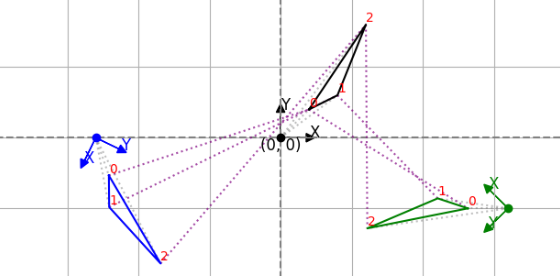Types of coordinate systems: Global vs.
Local
In the field of engineering, computer graphics, and physics, understanding the relationship between different coordinate systems is crucial for accurate modeling, simulation, and analysis.
The figure attached describes the concept of a global coordinate system (GCS) and a local coordinate system (LCS),
both of which are commonly used to define the position and orientation of objects in 3D space.
The GCS is represented by the axes x , y , and z .
This system provides a fixed reference for describing the location of all objects within the space.
In contrast, the LCS, denoted by the axes x' , y' , and z' , is tied to a specific object within the GCS.
It moves and rotates with the object, providing a reference frame that is local to the object itself.
.
.
